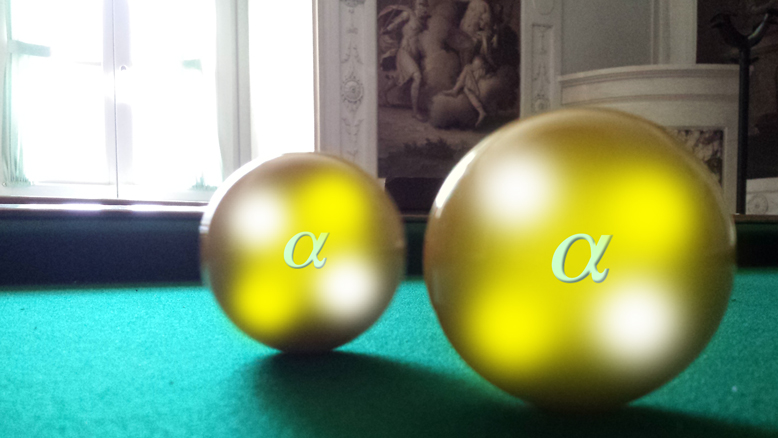Researchers Simulate Scattering of Helium Nuclei in Stars

Alpha particles, or helium nuclei, play a key role in the synthesis of elements such as carbon and oxygen within stars. An accurate description of alpha particles and their interactions is key to understanding how nature produces elements.
Since there’s no way to replicate elemental synthesis in a lab, physicists rely on mathematical calculations to determine how particles within a star interact. Physicists have been wrestling with alpha particle scattering for some time, but creating a good first principles calculation has proved difficult. This is partly due to the exponential scaling of computational effort with the number of particles – simply put, adding particles rapidly increases the amount of computational time needed, which severely limits the possibility of describing processes involving alpha particles and heavier nuclei.
In the letter “Ab initio alpha-alpha scattering” appearing in the journal Nature, a team of researchers from Bochum, Bonn, Jülich, Mississippi State, and NC State physicist Dean Lee present the first ab initio calculation of the scattering of two alpha particles. The researchers utilized a computational method that in essence “reduces” the number of objects being simulated.
The team used lattice simulations and a theoretical framework called chiral effective field theory to describe the low-energy interactions of protons and neutrons. By taking advantage of the computational efficiency of Monte Carlo simulations and a new technique, known as the adiabatic projection method, they used the Monte Carlo data to reduce the eight-nucleon problem to a system of two alpha particles. The lattice results show promising agreement with experimental scattering data and can be systematically improved in the future.
These new lattice Monte Carlo calculations may make it possible to compute important key astrophysical processes such as alpha scattering and capture on carbon in the near future. The methods can also be applied to scattering in ultracold atomic few-body systems and hadronic scattering using lattice quantum chromodynamics to describe the interactions of quarks and gluons.
The calculations by the research team were performed on JUQUEEN, a Blue Gene/Q supercomputer at the Jülich Supercomputing Centre in Forschungszentrum Jülich, and the Bull Cluster at RWTH Aachen. Partial support for the research was provided by the Deutsche Forschungsgemeinschaft, Helmholtz Association, Bundesministerium für Bildung und Forschung, U.S. Department of Energy Office of Science, U.S. National Science Foundation, EU HadronPhysics3, European Research Council, and the Magnus Ehrnrooth Foundation of the Finnish Society of Sciences and Letters.
- Categories:


